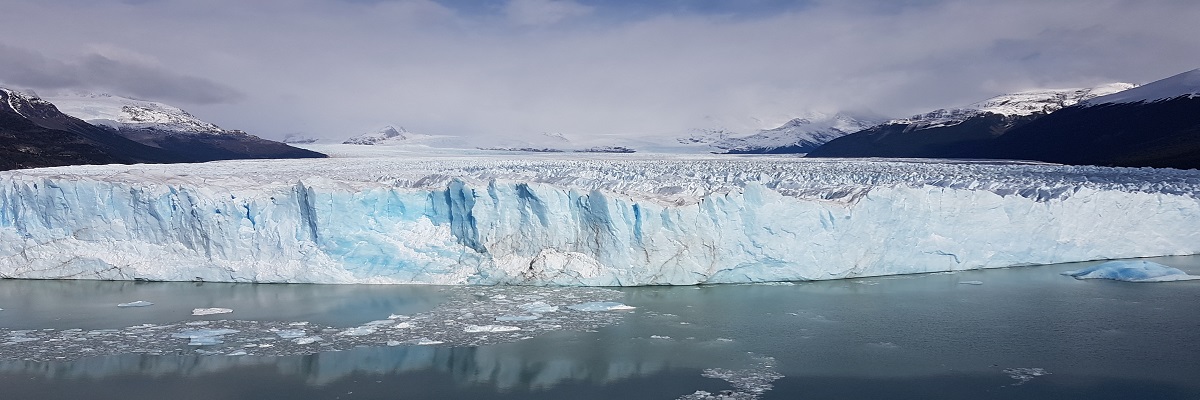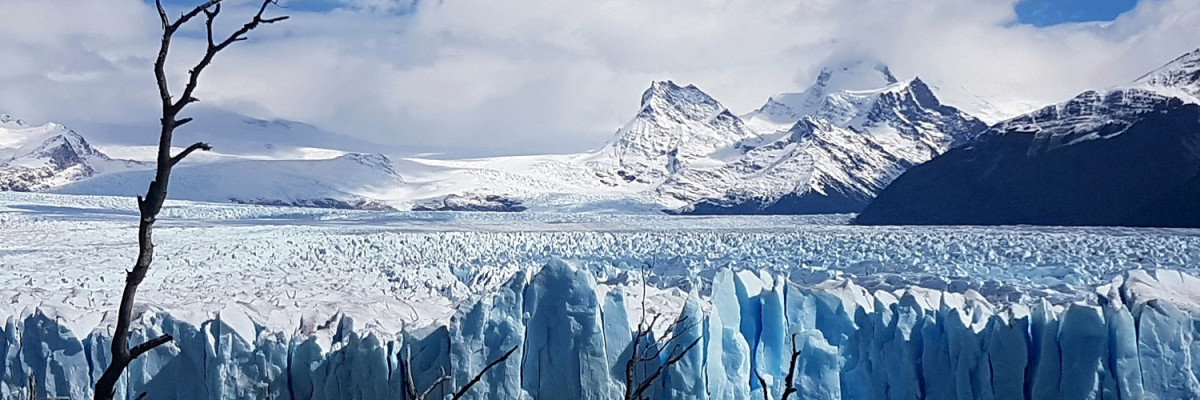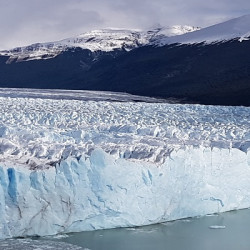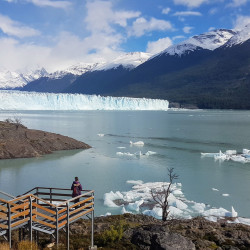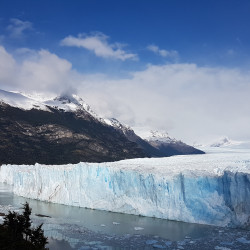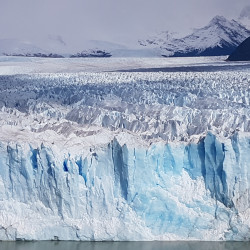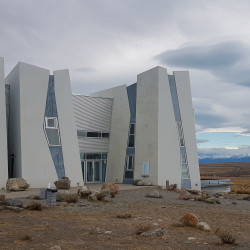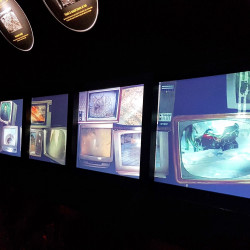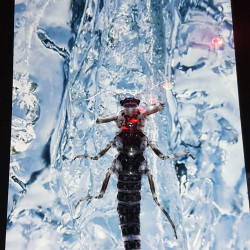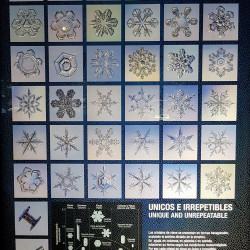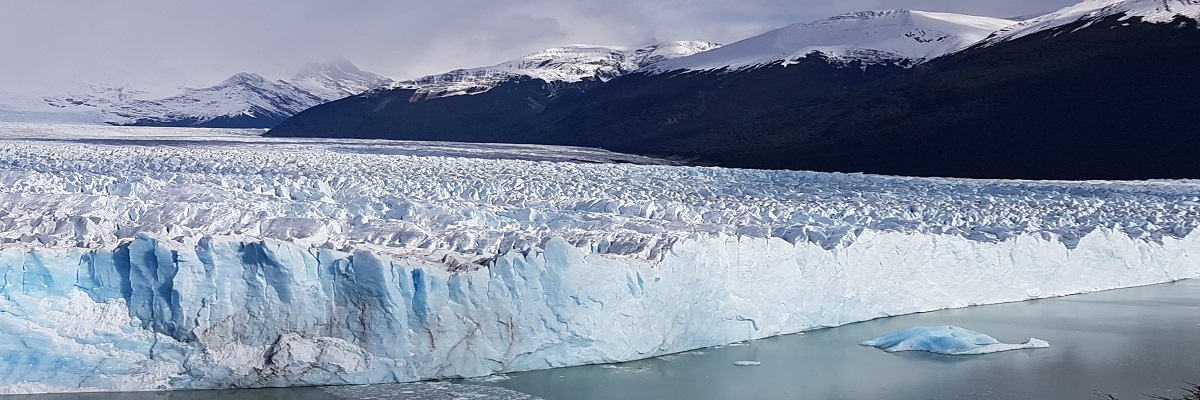In El Calafate I met a traveller who said the Perito Moreno Glacier is ‘just a lump of ice’; years ago, in Australia, I heard a someone describe Uluru/Ayers Rock as ‘just a rock’. This 97 square miles of jagged crystal peaks is by far the most captivating and enigmatic ‘lump of ice’ I have ever had the privilege of seeing (and I’m glad to say most of my fellow travellers were equally mesmerised by this incredible wonder of nature).
As much as I understand ice to be inanimate, having sat and watched it seethe and crack and crumble into the water, I began to feel it was a live being with a character and energy of its own. The bellows of collapsing ice which emerge from deep inside the structure are wonderfully mysterious; strange how a sound can be so loud and powerful yet soft at the same time. Regardless of its constant activity, the glacier emits an intensely serene energy and I found the hours I spent in its gaze had a beautifully meditative impact.
You can watch the glacier from a network of boardwalks which, on this day in March, were not particularly busy – certainly not, as some tourist spots are – covered with people vying for space, attempting to get a glimpse. In fact I took a walk around the entire network and found myself in perfect solitude for much of it. There are of course boat trips and excursions to walk on the glacier but if you don’t want to splash out on this – the local bus and boardwalks are a great way to see it.
The Glacearium is outside El Calafate on a isolated stretch of land with views out over the lake and mountains beyond (there is a free shuttle bus which takes you there from the town every hour or so). It is a beautiful location and I love the fact the building has been designed to look like a glacier. This is a fabulous place where all my questions were answered, such as why are they so blue:
” . . . whilst solar light may look white, it is in fact made up of all the colours of the spectrum. Blue light has more energy than yellow and red light which means that blue photons can penetrate further into the ice than other colours. The deeper the light travels the bluer it looks which explains why we can see so many shades of blue, turquoise and indigo in caves, moulins, icebergs and crevasses.”
(from the Glacearium, El Calafate, Argentina)
And, why is there a perennial sense of noise and movement from within the glacier?
“It moves stealthily, almost imperceptibly, creaking, grinding, creeping…ever changing. The melt-water become a stream, and as it starts to flow it meanders over the frozen surface of the glacier.
When a melt-stream finds a weakness in the ice, it bores through it creating a moulin or a pot-hole. These are usually cylindrical water-born holes that burrow within the ice. The water drains through these shafts into the glacier trying to reach its sole. As more water makes it’s way though the increasingly plastic nature of ice, rapids are created within the glacier.
The water travels for thousands of meters within this frozen maze trying to find an exit and in doing so a natural system of glacial drainage is forms by moulins, tunnels, abysses, shaft and pot-holes”
(from the Glacearium, El Calafate, Argentina)
In amongst the scientific, geological, historical, ecological, environmental matter pulled together, the makers of this museum have not neglected the enormous power, poetry and spiritual energy of the glacier. The irrevocable damage we are inflicting on our planet, and the impact of global warming is also delivered in a stark a memorable message. As I entered the final chamber of the museum – a long tube shaped tunnel lined with TV screens – a collection of red warning lights flashed, an alarm sounded, and a omniscient voice permeated the space with the announcement that this really is our last chance to save planet.

